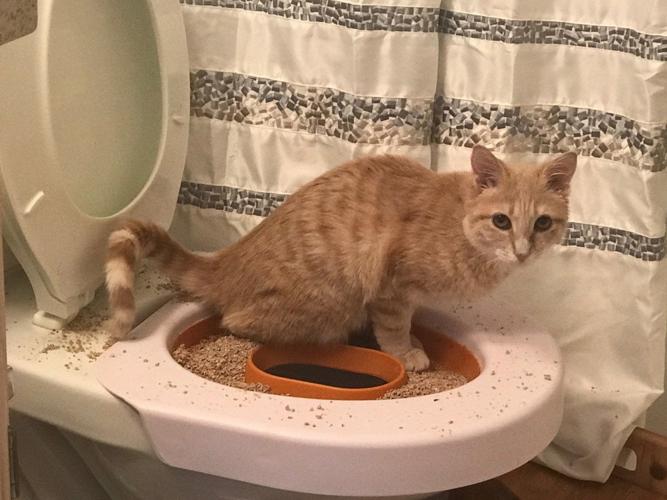Why Flushing Cat Poop Down Your Toilet Isn't a Good Idea - Tips for Safer Handling
Why Flushing Cat Poop Down Your Toilet Isn't a Good Idea - Tips for Safer Handling
Blog Article
In this article in the next paragraph you might get more sound material with regards to Can You Flush Cat Poo or Litter Down the Toilet?.

Introduction
As cat owners, it's essential to be mindful of how we take care of our feline buddies' waste. While it might appear practical to flush cat poop down the bathroom, this method can have destructive effects for both the setting and human wellness.
Ecological Impact
Purging feline poop presents dangerous microorganisms and bloodsuckers right into the water, posing a significant risk to water ecosystems. These pollutants can adversely influence aquatic life and concession water high quality.
Health Risks
In addition to ecological concerns, purging cat waste can additionally present health threats to people. Pet cat feces may include Toxoplasma gondii, a parasite that can cause toxoplasmosis-- a potentially severe ailment, specifically for expectant females and people with weakened immune systems.
Alternatives to Flushing
Luckily, there are more secure and a lot more accountable ways to get rid of cat poop. Consider the adhering to options:
1. Scoop and Dispose in Trash
The most typical method of disposing of feline poop is to scoop it right into a naturally degradable bag and toss it in the trash. Make sure to make use of a devoted trash inside story and get rid of the waste without delay.
2. Usage Biodegradable Litter
Opt for eco-friendly pet cat litter made from products such as corn or wheat. These clutters are environmentally friendly and can be securely disposed of in the trash.
3. Hide in the Yard
If you have a yard, think about hiding pet cat waste in a designated location far from vegetable yards and water sources. Be sure to dig deep adequate to avoid contamination of groundwater.
4. Install a Pet Waste Disposal System
Buy a family pet garbage disposal system especially made for feline waste. These systems use enzymes to break down the waste, decreasing odor and environmental impact.
Verdict
Accountable pet ownership extends beyond supplying food and shelter-- it also entails appropriate waste monitoring. By avoiding purging feline poop down the commode and going with alternative disposal methods, we can decrease our environmental footprint and safeguard human health.
Why Can’t I Flush Cat Poop?
It Spreads a Parasite
Cats are frequently infected with a parasite called toxoplasma gondii. The parasite causes an infection called toxoplasmosis. It is usually harmless to cats. The parasite only uses cat poop as a host for its eggs. Otherwise, the cat’s immune system usually keeps the infection at low enough levels to maintain its own health. But it does not stop the develop of eggs. These eggs are tiny and surprisingly tough. They may survive for a year before they begin to grow. But that’s the problem.
Our wastewater system is not designed to deal with toxoplasmosis eggs. Instead, most eggs will flush from your toilet into sewers and wastewater management plants. After the sewage is treated for many other harmful things in it, it is typically released into local rivers, lakes, or oceans. Here, the toxoplasmosis eggs can find new hosts, including starfish, crabs, otters, and many other wildlife. For many, this is a significant risk to their health. Toxoplasmosis can also end up infecting water sources that are important for agriculture, which means our deer, pigs, and sheep can get infected too.
Is There Risk to Humans?
There can be a risk to human life from flushing cat poop down the toilet. If you do so, the parasites from your cat’s poop can end up in shellfish, game animals, or livestock. If this meat is then served raw or undercooked, the people who eat it can get sick.
In fact, according to the CDC, 40 million people in the United States are infected with toxoplasma gondii. They get it from exposure to infected seafood, or from some kind of cat poop contamination, like drinking from a stream that is contaminated or touching anything that has come into contact with cat poop. That includes just cleaning a cat litter box.
Most people who get infected with these parasites will not develop any symptoms. However, for pregnant women or for those with compromised immune systems, the parasite can cause severe health problems.
How to Handle Cat Poop
The best way to handle cat poop is actually to clean the box more often. The eggs that the parasite sheds will not become active until one to five days after the cat poops. That means that if you clean daily, you’re much less likely to come into direct contact with infectious eggs.
That said, always dispose of cat poop in the garbage and not down the toilet. Wash your hands before and after you clean the litter box, and bring the bag of poop right outside to your garbage bins.
https://trenchlesssolutionsusa.com/why-cant-i-flush-cat-poop/

We had been made aware of that report about Don’t flush cat feces down the toilet through a good friend on another blog. Sharing is nice. Helping others is fun. Thanks so much for your time spent reading it.
Source Report this page